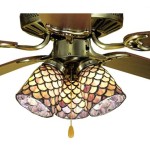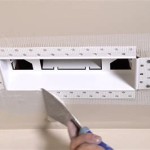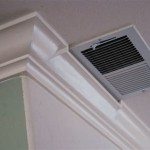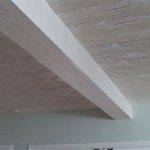Awesome Ceiling Fans To Keep You Cool In Summer And Winter Time
Ceiling fans serve as a practical and aesthetically pleasing addition to any home, offering a cost-effective method for climate control throughout the year. Their ability to circulate air efficiently makes them a valuable asset in both summer and winter, enhancing comfort levels while potentially reducing energy consumption. Understanding the various features and benefits of ceiling fans allows homeowners to make informed decisions when selecting the optimal fan for their needs.
The market presents a diverse array of ceiling fans, encompassing various sizes, styles, and technologies. These variations cater to different room sizes, aesthetic preferences, and functional requirements. From traditional designs to contemporary, smart-enabled models, ceiling fans offer a broad spectrum of options for enhancing a home's climate control system.
Understanding the Mechanics of Cooling and Heating
The primary function of a ceiling fan in the summer is to create a downdraft, which generates a perceived cooling effect. As the blades rotate counter-clockwise (when viewed from below), they push air downwards, creating a breeze that evaporates moisture from the skin. This evaporation process lowers the body's surface temperature, resulting in a sensation of coolness. The effectiveness of this cooling mechanism depends on the fan's blade pitch, blade length, and motor speed. A steeper blade pitch creates a more powerful downdraft, while longer blades circulate air over a wider area. Higher motor speeds increase the volume of air moved, further enhancing the cooling effect.
In the winter, the function of a ceiling fan reverses to destratify the air. Warm air naturally rises, accumulating near the ceiling. This stratification of air can lead to uneven temperature distribution within a room, with the upper areas being warmer than the lower areas. By switching the fan's direction to clockwise rotation (at a low speed), the blades gently pull air upwards, pushing the warm air trapped near the ceiling down along the walls. This process redistributes the warm air, creating a more uniform temperature throughout the room. This is accomplished by minimizing direct airflow, as the goal is to gently circulate the air without creating a noticeable breeze.
By destratifying the air, the heating system doesn't have to work as hard to maintain a comfortable temperature at floor level, potentially leading to energy savings. The efficiency of this process depends on the ceiling height and the fan's proximity to the ceiling. In rooms with high ceilings, destratification becomes more crucial, as the temperature difference between the ceiling and the floor can be significant.
Key Features to Consider When Choosing a Ceiling Fan
Several factors influence the performance and suitability of a ceiling fan. These factors should be carefully considered when selecting a fan to ensure it meets the specific needs of the space.
Size and Blade Span: The size of the room directly impacts the appropriate blade span for a ceiling fan. A fan that is too small for the room will not circulate air effectively, while a fan that is too large may create an uncomfortable draft. Generally, rooms smaller than 75 square feet benefit from fans with a blade span of 36 inches or less. Rooms between 75 and 144 square feet require a blade span of 42 to 48 inches. Larger rooms, ranging from 144 to 225 square feet, typically need a blade span of 50 to 54 inches. For rooms exceeding 225 square feet, a fan with a blade span of 56 inches or more is recommended.
Motor Type: Ceiling fans are typically powered by either AC (Alternating Current) or DC (Direct Current) motors. AC motors are generally less expensive but can be less energy-efficient and noisier than DC motors. DC motors, while often more expensive upfront, offer higher energy efficiency, quieter operation, and a wider range of speed settings. DC motors also tend to be more durable and longer-lasting than AC motors.
Blade Pitch: Blade pitch refers to the angle of the fan blades relative to the horizontal plane. A steeper blade pitch generally results in greater air movement. However, a very steep blade pitch may also require a more powerful motor to operate efficiently. A blade pitch between 12 and 15 degrees is generally considered optimal for effective air circulation.
Mounting Options: Ceiling fans can be mounted in various ways, depending on the ceiling height and the presence of existing electrical boxes. Flush-mount fans are ideal for rooms with low ceilings (less than 8 feet), as they minimize the distance between the fan and the ceiling. Downrod-mount fans are suitable for rooms with higher ceilings (8 feet or more), as they allow the fan to be positioned at an optimal height for air circulation. Angled-mount fans are designed for sloped ceilings and allow the fan to hang level.
Lighting: Many ceiling fans incorporate integrated lighting fixtures, providing both illumination and air circulation. LED lights are becoming increasingly popular due to their energy efficiency and long lifespan. When selecting a ceiling fan with lighting, consider the type of light (e.g., incandescent, halogen, LED), the brightness (measured in lumens), and the color temperature (measured in Kelvin) to ensure it meets the lighting needs of the room.
Control Options: Ceiling fans can be controlled in several ways, including pull chains, wall controls, and remote controls. Pull chains are the simplest and most common control method, allowing users to adjust the fan speed and turn the light on or off. Wall controls offer a more convenient way to control the fan from a fixed location. Remote controls provide the most flexibility, allowing users to adjust the fan speed, direction, and lighting from anywhere in the room. Some modern ceiling fans are also compatible with smart home systems, allowing users to control the fan via voice commands or smartphone apps.
Energy Efficiency and Cost Savings
Ceiling fans can contribute significantly to energy efficiency by reducing the reliance on air conditioning and heating systems. In the summer, the cooling effect of a ceiling fan allows homeowners to raise the thermostat setting on their air conditioner by several degrees, potentially reducing energy consumption by 15% or more. The perceived cooling effect makes a higher temperature setting comfortable, thereby conserving energy.
In the winter, the destratification of air facilitated by ceiling fans reduces the workload on the heating system. By distributing warm air more evenly throughout the room, the thermostat doesn't need to be set as high to maintain a comfortable temperature at floor level. This can also lead to noticeable energy savings. It is important to remember to use the fan at a low speed to avoid creating a chilling breeze.
Choosing an energy-efficient ceiling fan can further enhance these savings. Look for fans with the ENERGY STAR label, which indicates that the fan meets strict energy efficiency guidelines set by the U.S. Environmental Protection Agency. ENERGY STAR-certified ceiling fans typically use significantly less energy than standard fans, resulting in lower electricity bills. Fans using DC motors tend to be vastly more energy efficient than AC motors.
The lifespan of a ceiling fan also contributes to its overall cost-effectiveness. A well-maintained ceiling fan can last for many years, providing long-term climate control benefits with minimal maintenance requirements. Regular cleaning of the blades is important to maintain optimal performance and efficiency. Dust accumulation can reduce the fan's ability to circulate air effectively, increasing energy consumption. Ensuring the fan blades are properly balanced can extend the life of the motor and reduce noise.
Beyond energy savings, ceiling fans also contribute to a more comfortable and healthy indoor environment. By circulating air, they help to reduce humidity levels, preventing the growth of mold and mildew. Proper air circulation also helps to distribute allergens and pollutants more evenly, reducing the concentration of these particles in specific areas of the room, which can be especially beneficial for individuals with allergies or respiratory problems.
In conclusion, selecting the right ceiling fan involves carefully considering room size, motor type, blade pitch, mounting options, lighting preferences, control requirements, and energy efficiency. By making informed decisions, homeowners can optimize the benefits of ceiling fans, enjoying increased comfort, reduced energy consumption, and a healthier indoor environment throughout the year. The long-term cost savings and environmental benefits associated with ceiling fans make them a valuable investment for any home.

The 5 Best Ceiling Fans Of 2025 Rewiews

What Is The Right Ceiling Fan Direction For Summer And Winter Pro Tool Reviews

The 5 Best Ceiling Fans Of 2025 Rewiews

Summer Winter Mode Fans Why Direction Makes A Difference Martec

Do Ceiling Fans Cool A Room Best Fan Direction For Cooling

Ceiling Fan Direction In Winter Vs Summer Taskrabbit Blog

12 Stylish Outdoor Ceiling Fans 2025 Our Top Picks

Which Way Should Fan Spin In Summer Or Winter Hunter
Ceiling Fan Direction In Winter And Summer

Xaujix Ceiling Fan With Light And Remote Control 52 Black 6 Sd Reversible Dc Motor 5 Wood Blades
Related Posts








